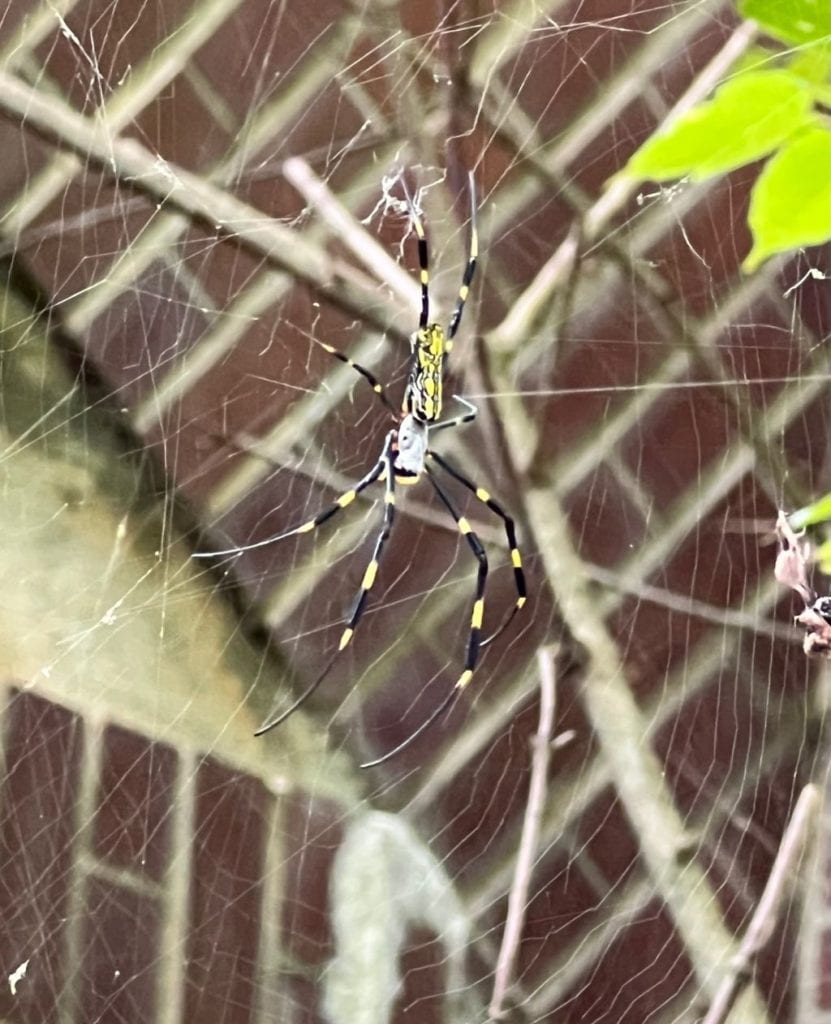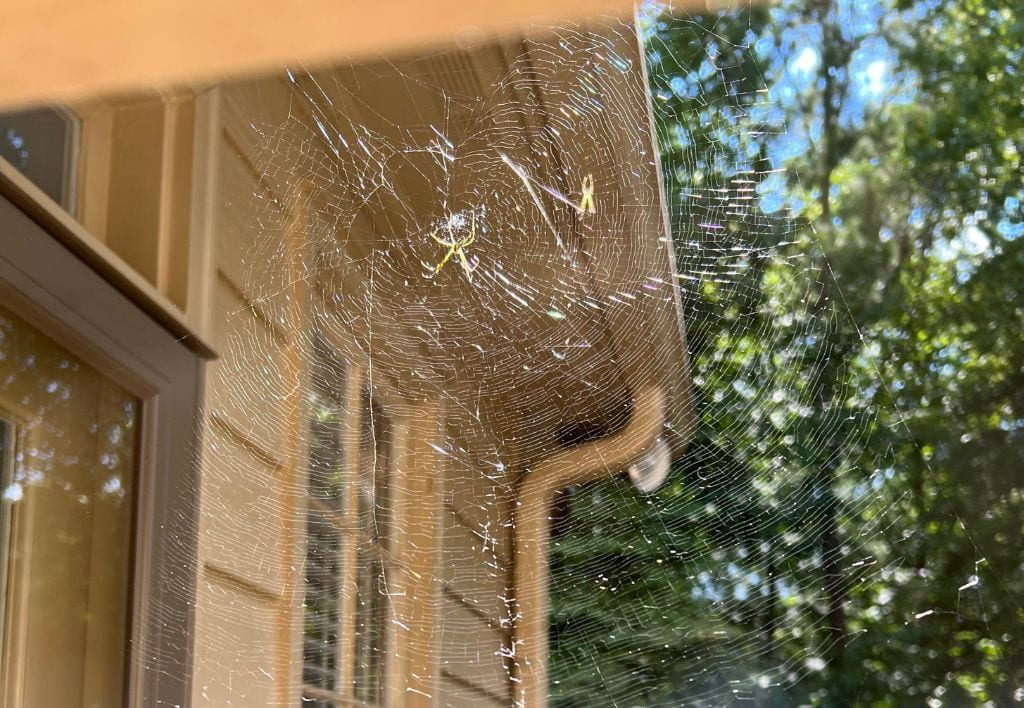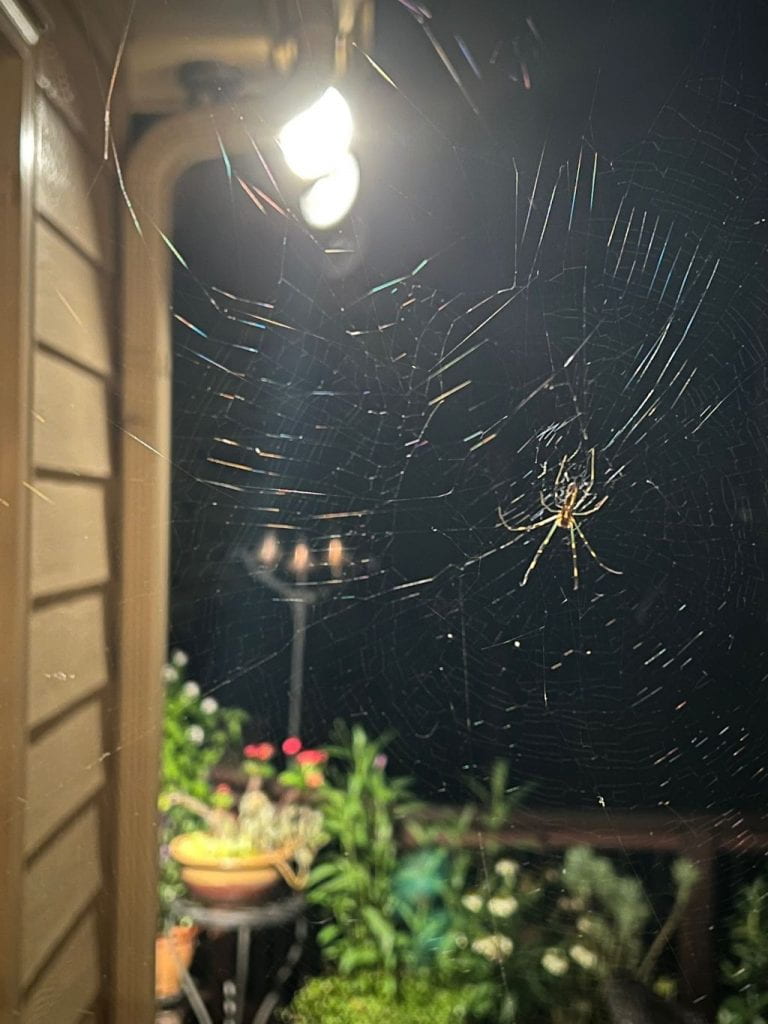They’re Everywhere!
Grateful that their bite cannot harm people or pets. After females lay their egg sacs in late summer, they will die at the first frost. Four to five hundred spiderlings will hatch next spring. Joro spiders travel via ballooning, meaning they use their silk to ride air currents. Could this explain how the Joro spider population has spread so quickly?
I’m starting to spot male spiders, smaller and less colorful than the females, in the webs.
Just added this book to my library.
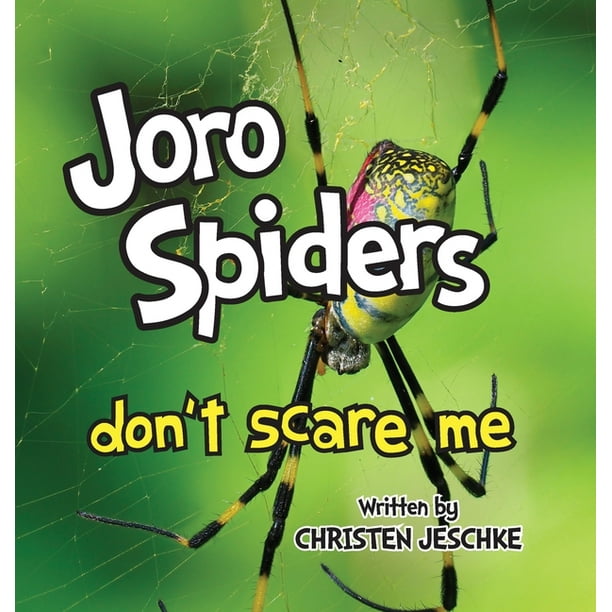
The construction of orb webs fascinates me, and I’ve posted about them several times. Click here to see orb webs one foggy morning and click here to see a web in a window. You can spray orb webs with a fine mist to see the details of the webs. Gently throw a leaf into the web and watch how the spider interacts with it.
The Very Busy Spider by Eric Carle is a fun story to dramatize with your young scientists. Give the actor who is the spider a ball of yarn to weave among items in your classroom or purchase a large orb web to use as the background. (Click here for an example.)
Click here to view full screen.
Students can make orb webs in a variety of ways. Create an orb web on waxed paper with glue. Let it dry and then peel it off. My students have also created webs with glue and while the glue was wet, they sprinkled glitter over them. (They look like webs glistening with water droplets.) We added a spider after the glue dried. Drawing webs is always an engaging task! Click here.
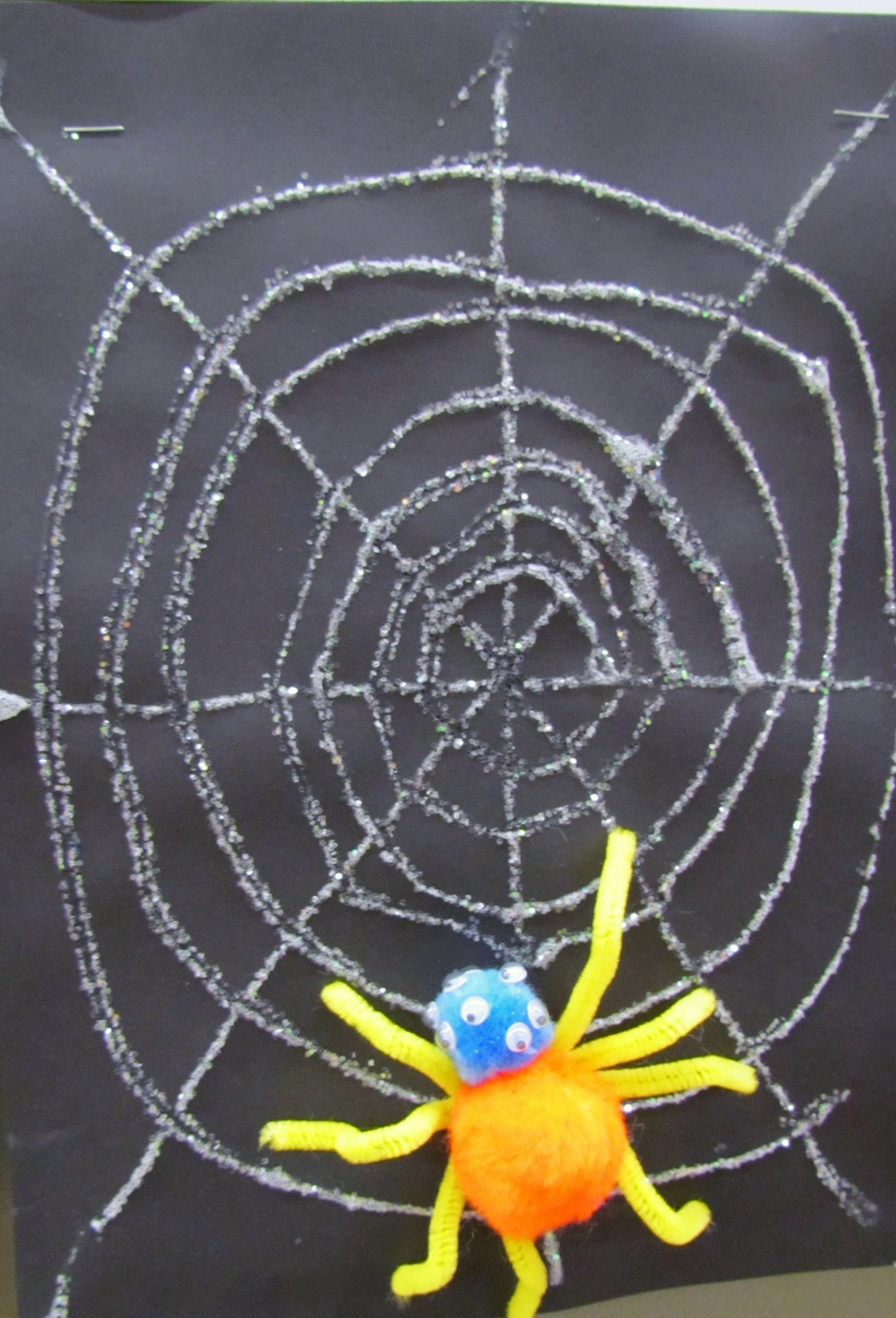
I’ve used the study of spiders to teach students to differentiate between facts and opinions in reading. Lots of people have opinions about spiders! Ideas from former students:
Facts:
Spiders are invertebrates. Most spiders spin webs. Spiders have eight legs and two body parts. Most spiders have eight eyes. There are different kinds of webs.
Opinions:
Everyone should study spiders. Spiders are the coolest! Spiders are scary. Spiders are fun to study. Orb webs are the best kind of webs.
